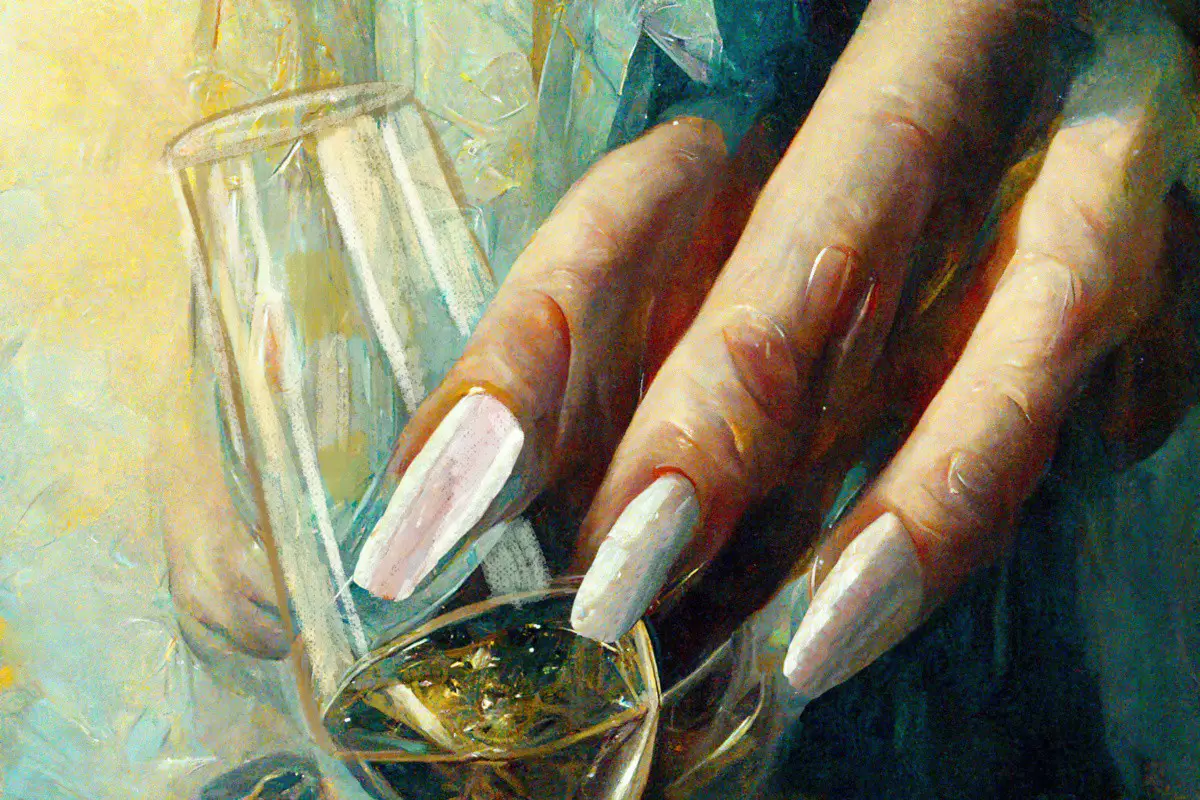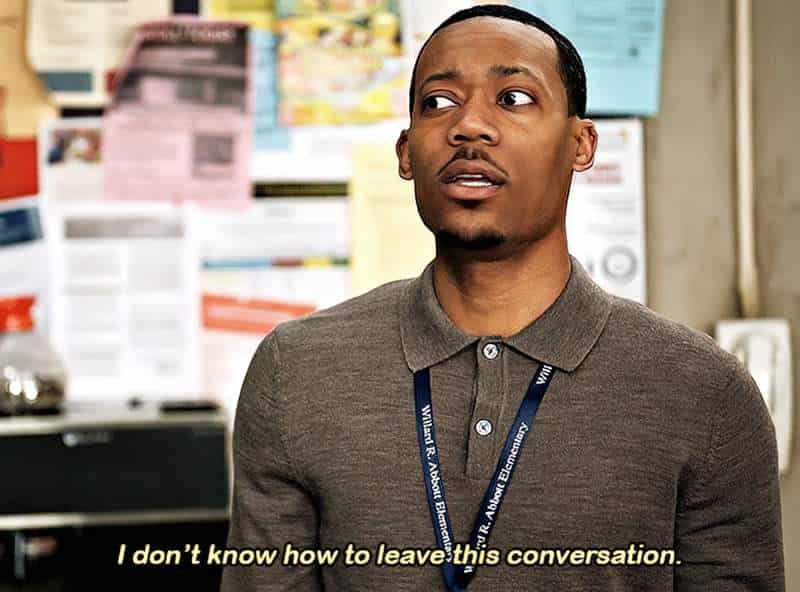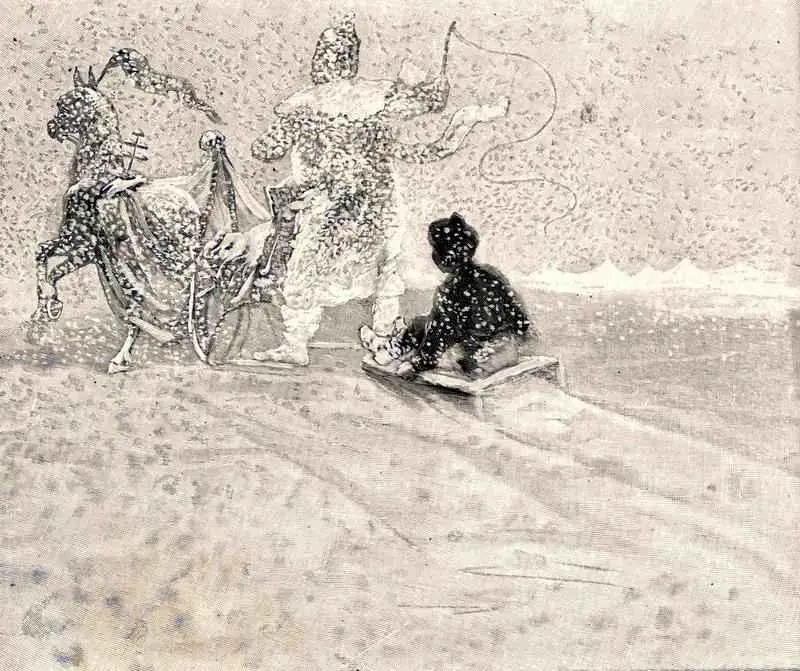“Foes” is a short story by American writer Lorrie Moore. The Guardian published it on the eve of the election which would see Obama to the presidency, and can be read in full here. It is also in Bark and in Collected Stories.
This is such an American story, so Americans will have a more in-depth knowledge of its historical context than I do. My main interest lies in the story structure and writing techniques.
That said, if anyone anywhere has ever been at a social gathering, made smalltalk with a stranger than realised as the conversation wears on that this nice, smiling and friendly person has political views you find repugnant, you will likely identify with the character of Bake McKurtry, even if you’re not American.
A good way to create conflict is to shove the rich and poor together in the same small space, but when we put the “hedgefund” people and the “haiku” people together, that conflict works just as effectively (and is basically the same thing, I guess?)
SETTING OF FOES
PERIOD — 2008
DURATION — The preparation for a dinner party, the dinner party, and the conversation that takes place afterwards between husband and wife.
LOCATION — America. Washington, D.C. Symbolically significant: This fundraiser/gala is being held in a building which was once a bank (which has recently gone under). Lorrie Moore’s characters are literary and smart; they tend to know symbolism when they see it in their (fictionally) real lives: Via Bake’s point of view we get “So what if subtle boundaries of occasion and transaction had been given up on? So what if this were a mausoleum of greed now danced in by all.” The bank is a:
vast room filled with a hundred white-clothed circles, flickering with candlelight. Small vases of heather sprigs that could easily catch fire had been placed in the centre as well. So were little chrome cardholders declaring the table numbers.
ARENA — The main character comes from Chicago, which to people around him in Washington is mostly unknown. These people know so little of Chicago that they think only of Al Capone. They are staying at a Georgetown B&B. Georgetown is a historic neighbourhood and a commercial and entertainment district located in northwest Washington, D.C., situated along the Potomac River.
Though it was named after the man he had devoted years of affectionate thought and research to, he had never liked this city. An ostentatious company town built on a marsh — a mammoth, pompous chit-ridden motor vehicle department run by gladiators. High-level clerks on the take, their heads full of unsound sound bites and falsified recall.
MANMADE SPACES — a dining room with big circular tables
LEVEL OF CONFLICT — Barack Obama is running for president against John McCain. Lorrie Moore loosely disguises Obama by giving him the name “Bracko”.
THE EMOTIONAL LANDSCAPE — Blake thinks he flat out can’t stand Republicans. His feelings so far have been unnuanced and easy to parse in himself. He is about to meet someone who elicits several dissonant emotions, and this will change him in a small but profound way.
CAST OF CHARACTERS
Bake
The main character. “I’m 60 and on anti-depressants.” Bake McKurty is a reasonably famous biographer who has to go to a fundraising dinner for Lunar Lines Literary Journal, a literary magazine. His wife is called Suzy. The conflict in this story arises because Bake and Suzy don’t like to spend time with rich people (might we statistically expect the richest Americans to be Republicans?). Democrats Bake and Suzy especially don’t want to do this dinner when they’re in the position of covertly asking rich people for money. We see them grin and bear it. We see Bake falling into the trap of arguing with Linda, a racist, rich, Asian Republican woman.
Suzy
Bake’s wife is in agreed-upon advisory role, there to make sure Bake doesn’t lose his rag with those who disagree politically.
The sculptor and his wife
Sitting next to Suzy at the dinner. They also introduce Suzy to their son. Suzy is having quite a different experience with the arty family, managing pleasant conversation. Any dinner party requires very minor characters to flesh out the idea of a larger social gathering. (Also mentioned: a young investor couple from Wall Street who had not yet lost their jobs…then an editorial assistant from 3LJ.
Linda
A racist Republican Asian woman sitting next to Bake at the dinner. He finds Asian women attractive, though he is careful to keep this to himself. He loses the feeling of attraction as she reveals more and more of her views. Linda appears to be a knowing shit-stirrer rather than a naïf who unwittingly steps into a conversation with someone whose views are so foreign she finds them unfathomable. (Those people exist, too.) Evidence: Linda introduces herself as a “lobbyist for some evil cause”.
Linda’s long, white nails are an oft-mentioned detail in this story, which puts me on ‘motif alert’. Let’s consider all mentions together:
Her nails were long and painted white – perhaps they were fake.
He could see Linda’s nails were fake. Or, if not fake, something. They resembled talons.
He saw now that her fingernails really were plastic, that the hand really was a dry frozen claw, that the face that had seemed intriguingly exotic had actually been scarred by fire and only partially repaired.
Functioning as a motif, it’s a pretty simple one: fake nails, fake person. Possibly inverted, because is Linda really fake? She seems to me like she’s speaking her mind. It’s clearly not Linda who is fake, but Bake’s initial impression of her: At first sexually attractive, it turns out his sexual interest is contingent upon shared values, and so the sexual interest gradually evaporates to nought. Now he feels that his intial sexual attraction must have been a ‘fake’ feeling (whereas in fact it was true at the time, before he had more information).

I believe these three mentions of Linda’s nails have a more important story function, and it’s simple enough: Three different snapshots of this small part of Linda (for he really still only knows a little about her) form a triptych which depict in graph-like format a clear degradation of attraction.
This may be taking things too far, but I’m interested in the colour of Linda’s fingernails: white. If Linda is a witch, she is a specific type of folkloric witch, the white witch — initially beguiling, though a little dangerous from the get-go, eventually revealing herself to her victim as a deformed creature who induces disgust. Substitute ‘white witch’ with ‘fairy queen’. The ancient fairy queen archetype is both beautiful and ugly, dependant upon which side of us she wishes to reveal:
There is no sense that the queen of the fairies is really old, or bloody, or the author of castration and deformity. Rather, both beauty and deformity turn out to be appearances. Femininity is the instability of these appearances, their shimmering refusal to resolve themselves into a single stable object of desire.
Diane Purkiss, Troublesome Things: A history of fairies and fairy stories
Back to the concept of ‘fakeness’ (cf. Linda’s plastic fingernails), the modern conception is that a creature who shows her ugliness must really be ugly — the beauty was the mask. But for the ancient fairy queen, ugliness and beauty may both be masks, operating more like a two-faced Janus than like a mask. Neither version is more true than the other.
Linda is very much choosing to reveal a side of herself she knows full well Bake will find repulsive. I believe she’s having fun with that. Why else would she be at this insufferable dinner? She’s clearly uninterested in literary things.
The cabbie
Takes Suzy and Bake to their venue, who nods and says ominously: “Oh, yes.”
STORY STRUCTURE OF FOES
“Foes” is a ‘chit-chat at a party’ story, composed largely of dialogue interspliced with body language beats. Some writers do those very well. Lorrie Moore is one of them.
Other examples of short stories which are portraits of awkward conversations between very different people confined by the rules of politeness:
- “A Dill Pickle” by Katherine Mansfield (1917)
- “Her First Ball” by Katherine Mansfield (1921)

PARATEXT
On the eve of the US election, we publish a new story by Lorrie Moore, the finest short-story writer in America today
THE GUARDIAN SUBHEAD
SHORTCOMING
Bake does not suffer fools gladly. Also, he cannot stand condescension. So putting him at a dinner table next to someone with apposite political views, and who does not know of his work, let alone respect it, is the perfect recipe for dinner table conflict.
DESIRE
Bake’s at the party to secure a big donation for a literary magazine, and this is something I call a ‘McGuffin desire’, because it only serves to kick off the story. Just like a regular Hitchcockian McGuffin, the reader is not encouraged to care about whether Bake achieves this goal or not. Indeed, we soon forget about it. This story won’t be deemed a ‘tragedy’ if he fails to get the donation — in fact, the story closes before we even find out if he managed it.
So what’s the story-worthy desire in this particular plot? Bake wants to get through a mostly-compulsory dinner without too much conflict.
He has a deeper desire: To be taken seriously. (Don’t we all?)
OPPONENT
There’s a bit of minor conflict between Bake and his wife — I deduce of many years. They are not really fighting when they talk about their clothes. Their conversation shows that they understand each other on a very deep level. Their back-and-forth is enough to keep the reader interested.
The main opponent is Linda, who stands more generally for anyone whose political views disgust us.
PLAN
Husband and wife have a plan: They will endure this fundraiser, and Suzy will ‘rescue’ Bake from getting into uncomfortable conversations, which they clearly predict will happen.
THE BIG STRUGGLE
Linda’s revelations become more and more repugnant to Bake until finally Linda tells him she was at the Pentagon on September 11, 2001.
“I know what it’s like to be bombed by terrorists – I was in the Pentagon when they crashed that plane right down into it and I’ll tell you: I was burned alive but not dead. I was burned alive. It lit me inside. Because of that I know more than ever what this country is about, my friend.”
Successful stories take the reader as close to death as possible. A literal brush with death is many times completely impossible, because not every story features a fight/disaster/illness scene, right? There are many ways to achieve psychological death. In this case, it’s the recollection of a former near-death experience.
ANAGNORISIS
At what point does Bake realise something about himself? It comes via his reaction to Linda, right after she has shared her 9/11 memory and he is fully repulsed by her nails:
He saw how she was cloaked in a courageous and intense hideosity. The hair was beautiful but now he imagined it was probably a wig. Pity poured through him: he’d never before felt so sorry for someone. How could someone have suffered so much? How could someone have come so close to death, so unfairly, so painfully and heroically, and how could he still want to strangle them?
“Foes”
This is the sort of nuanced reaction Alice Munro is also very good at — layered, complex emotion. Within minutes, Bake has felt both attraction and repulsion for the same person. Interestingly, Moore is making use of an ancient witch trope: The glamorous witch who disguises herself as an old woman, perhaps (as in Spanish folklore) to test the goodness of people. (Will they help her cross the road, even though she’s ugly?)
It is clearly possible to feel two ways about the same person at once. This is a psychological issue which I suspect has only become more salient for Americans since this story was published: How to reconcile co-existing alongside people who are in some ways perfectly nice, and in other ways morally/politically repugnant? Psychologists talk about cognitive dissonance; is there a separate thing called ’emotional dissonance’?
Oh, I just looked it up. This is about right, isn’t it?
emotional dissonance is the conflict between experienced emotions and emotions expressed to conform to display rules.
The Impact of Emotional Dissonance on Organizational Commitment and Intention to Turnover
Basically, a Democrat meets a modern fairy queen at a dinner party. Her simultaneous beauty and ugliness lead him to the revelation that he can synchronously feel conflicting emotions bout Republicans.

NEW SITUATION
Bake and Suzy leave the gala. The reader is permitted to travel with them. We see them laugh together about the characters they met — fodder for future in-jokes, no doubt.
However, Bake does not tell Suzy about Linda. I sense he tells her about most people he meets at these gatherings they’re obliged to attend, and that Linda has affected him so differently that he needs time to process it alone. So he instead laughs with Suzy about someone else’s mispronuncation of beaucoup faux.
EXTRAPOLATED ENDING
Evenings like these no doubt improve the closeness between long-married couple Bake and Suzy.
But Bake is viewing his own wife differently now. He has noticed something about Linda’s hair (probably a wig, he deduces) and now he sees his own wife’s hair as something detached from her (ie. like a wig). In some ineffable way, Linda has changed the relationship between Bake and his own wife. We don’t know if this change will be fleeting or permanent. Because this is where we leave them.
RESONANCE
I see witches and fairies populating modern stories set in the real world; I think there will be stories about witches for as long as there are stories about women, and men’s reactions to women.
